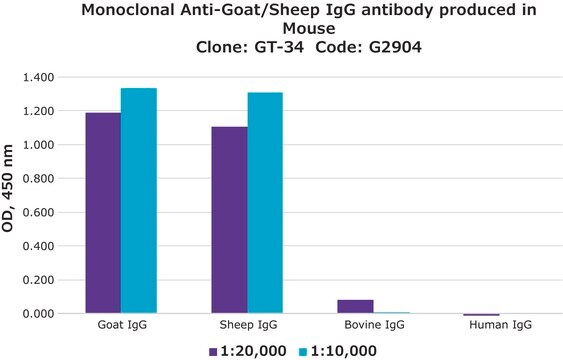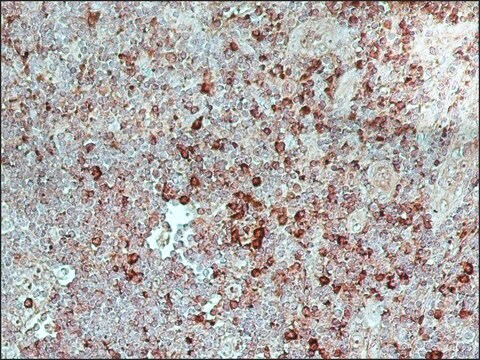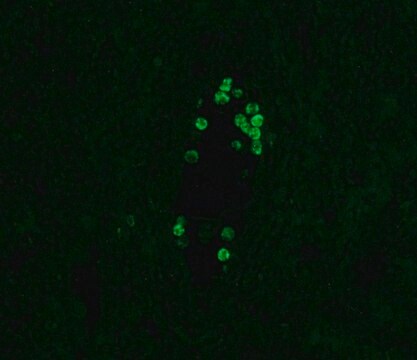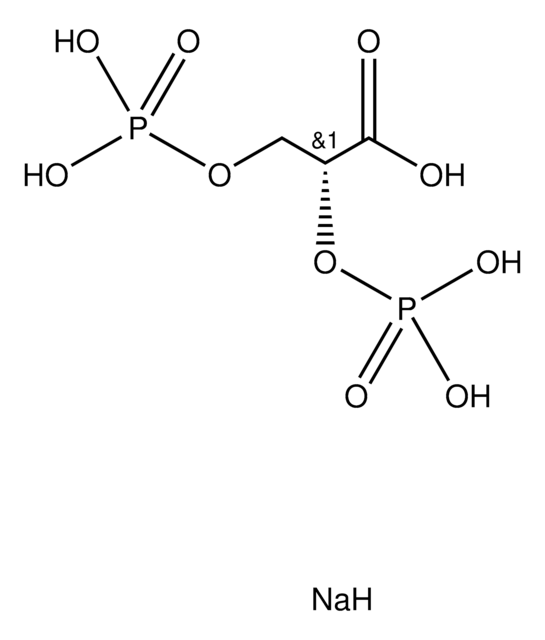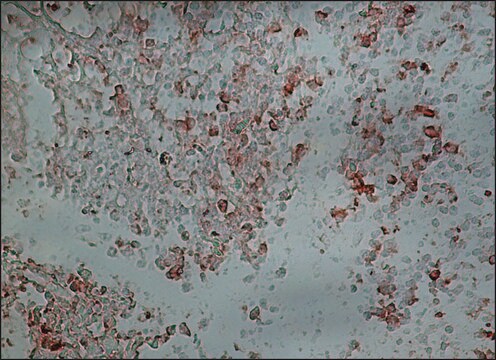F4891
Anticorps monoclonal anti-IgG de chèvre/mouton
clone GT-34, purified from hybridoma cell culture
Synonyme(s) :
Monoclonal Anti-Goat/Sheep IgG
About This Item
Produits recommandés
Source biologique
mouse
Conjugué
FITC conjugate
Forme d'anticorps
purified from hybridoma cell culture
Type de produit anticorps
secondary antibodies
Clone
GT-34, monoclonal
Forme
buffered aqueous solution
Espèces réactives
sheep, goat, bovine
Ne doit pas réagir avec
rat, canine, mouse, rabbit, guinea pig, chicken, horse, pig, feline, human
Conditions de stockage
protect from light
Technique(s)
dot immunobinding: 1:32
immunohistochemistry (formalin-fixed, paraffin-embedded sections): 1:20
particle immunofluorescence: 1:32
Isotype
IgG1
Conditions d'expédition
dry ice
Température de stockage
−20°C
Modification post-traductionnelle de la cible
unmodified
Vous recherchez des produits similaires ? Visite Guide de comparaison des produits
Description générale
Spécificité
Application
Actions biochimiques/physiologiques
Forme physique
Stockage et stabilité
Clause de non-responsabilité
Vous ne trouvez pas le bon produit ?
Essayez notre Outil de sélection de produits.
Code de la classe de stockage
10 - Combustible liquids
Classe de danger pour l'eau (WGK)
nwg
Point d'éclair (°F)
Not applicable
Point d'éclair (°C)
Not applicable
Équipement de protection individuelle
Eyeshields, Gloves, multi-purpose combination respirator cartridge (US)
Certificats d'analyse (COA)
Recherchez un Certificats d'analyse (COA) en saisissant le numéro de lot du produit. Les numéros de lot figurent sur l'étiquette du produit après les mots "Lot" ou "Batch".
Déjà en possession de ce produit ?
Retrouvez la documentation relative aux produits que vous avez récemment achetés dans la Bibliothèque de documents.
Notre équipe de scientifiques dispose d'une expérience dans tous les secteurs de la recherche, notamment en sciences de la vie, science des matériaux, synthèse chimique, chromatographie, analyse et dans de nombreux autres domaines..
Contacter notre Service technique
